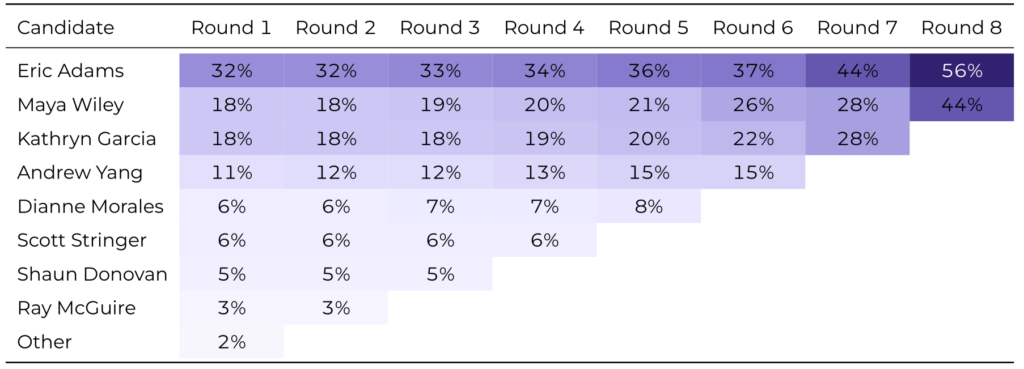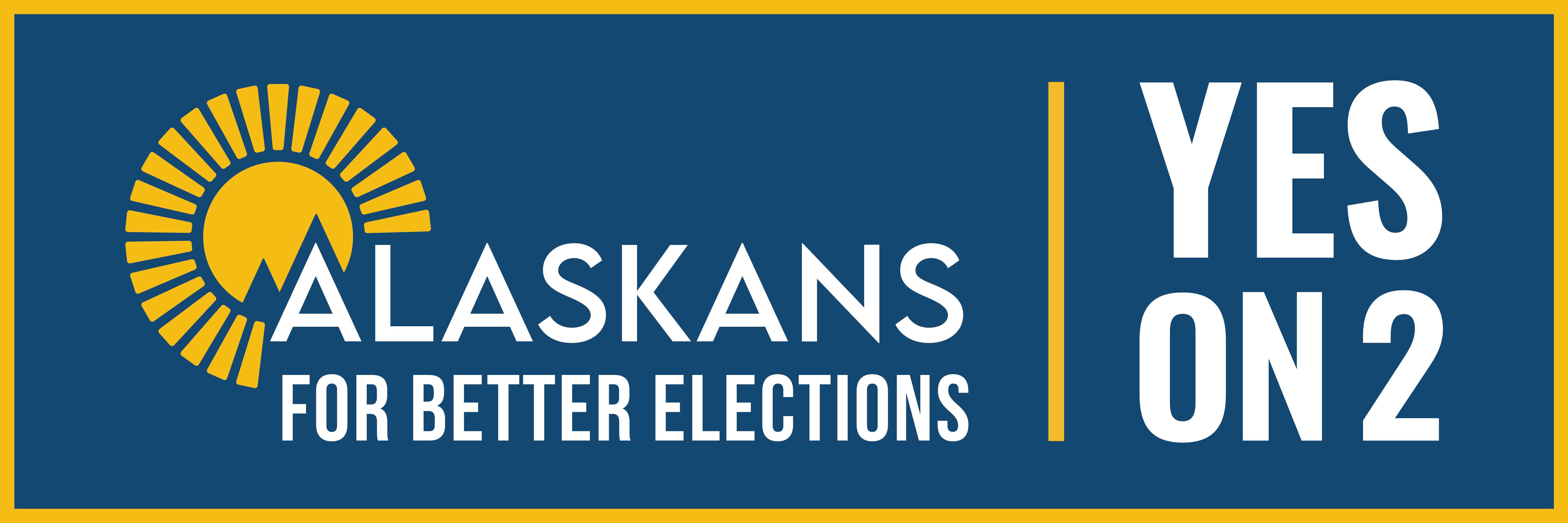Supporting a Successful First New York City RCV Election
1% difference in 1st-choice votes for Eric Adams between our poll and final results
Called Eric Adams’ ultimate victory and the top four candidate rankings through the second to last round

Partnership with FairVote
In 2021, FairVote turned to Citizen Data to survey the 2021 Democratic Mayoral Primary and the Republican local primaries in Staten Island.
Two years prior, New York City voted to enact ranked choice voting (RCV) for all citywide primary elections. With millions of voters using this election method for the first time, FairVote sought to instill confidence in this new system — and key to achieving that was to prove RCV elections can be accurately polled, and demonstrate that the method has clear support in the city.
Citizen’s ability to give voice through its insights to both Spanish and English speakers was critical to ensuring FairVote was able to reduce subjectivity and make critical decisions around communications and successful implementation of the measure.
The result of this partnership was a highly successful poll that accurately predicted, within one percentage point, the first-choice votes for former Brooklyn Borough President and frontrunner Eric Adams.

"Citizen Data's team was effective and easy to work with. They really nailed the numbers in their polling, which was of immediate value in earning credibility and for helping people anticipate the likely ranked choice outcomes in the Democrats' mayoral primary."
Rob Richie, FairVote president & CEO
The Challenge: Polling an Election Using RCV
Following New York City’s adoption of RCV in 2019, the 2021 primary election was the city’s first to officially feature RCV as a voting method.
Under RCV in NYC, voters rank candidates in order of their preference from one to five. Once first-choice votes are counted, the candidate with the lowest total is eliminated from contention. Anyone who ranked that candidate first then automatically has their vote reassigned to whomever they ranked second. Candidates continue to be eliminated, and voters’ choices reallocated according to their preferences, until one candidate receives a simple majority.
RCV has numerous benefits, like providing voters with more choice, saving money by replacing runoff elections, discouraging overly negative voting, and more.

RCV was brand new to millions of NYC voters voting in the 2019 primary — and pollsters who cover state and local elections as well. Many questions arose, such as: what’s the best way to implement, educate, and accurately poll an election such as this?
To find the answers, FairVote turned to our team of pollsters, data scientists, analysts, and strategists.
Rob Richie, FairVote president & CEO
Our Approach: Designing The Perfect Survey
Up until the point Citizen got in the game, there had been limited mayoral surveys that went through and predicted each round of the runoff.
It was late in the campaign, so we set out at a brisk pace to get the language developed in both English and Spanish. With early voting already started, we needed to capture if someone had already voted in addition to each person’s candidate rankings. It required delicate survey construction to get the information needed while not causing New Yorkers to give up on taking it.
Our team of experts turned this around in stellar time, getting into the field on June 14th, eight days before election day. All responses were received by June 17th, just four days before the report’s anticipated release date.
Despite the tight timeline, Citizen completed our analysis of the poll’s results — including running our RCV simulation — and sent them to FairVote for an on-time release the day before the critical election.
The Results: An Accurate Picture Heading Into Election Day
With the final results tallied, Citizen’s poll proved to be highly accurate in predicting voters’ first-choice preference among top candidates.
Contrary to most polling data in the lead-up to the primary election, our results precisely predicted the percent of first-choice votes for former Brooklyn Borough President and frontrunner Eric Adams.
Furthermore, our poll accurately predicted Eric Adams’ ultimate victory and the top four candidate rankings through the second to last round — failing only to account for the Kathryn Garcia/Andrew Yang alliance that formed shortly after this poll was conducted.

As a result of the accuracy of the research results, FairVote and RCV received national press coverage.
Citizen Data continues to study RCV, and other key electoral reforms, to better understand how to reach and persuade Americans across the political spectrum. We’re committed to continuing to study these complicated issues and delivering you actionable insights so that we can continue to drive change together.
Are you looking for accurate polling data, whether related to an election, voter sentiment on current events, or how your messaging resonates with Americans? Don’t hesitate to reach out.
Reinventing Alaskan Elections
In 2020, Citizen Data was commissioned by Alaskans for Better Elections to support the establishment of a new election system that gives Alaska’s diverse population more voice and representation in government. The initiative sought to enact open primaries, ranked choice voting, and donation disclosures to reduce the influence of out-of-state money.
